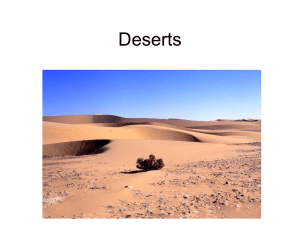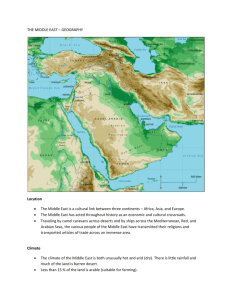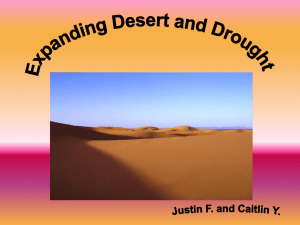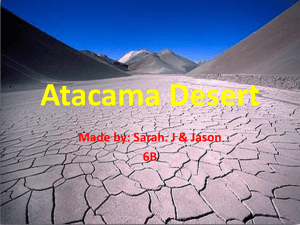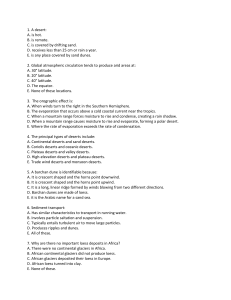Desert
advertisement
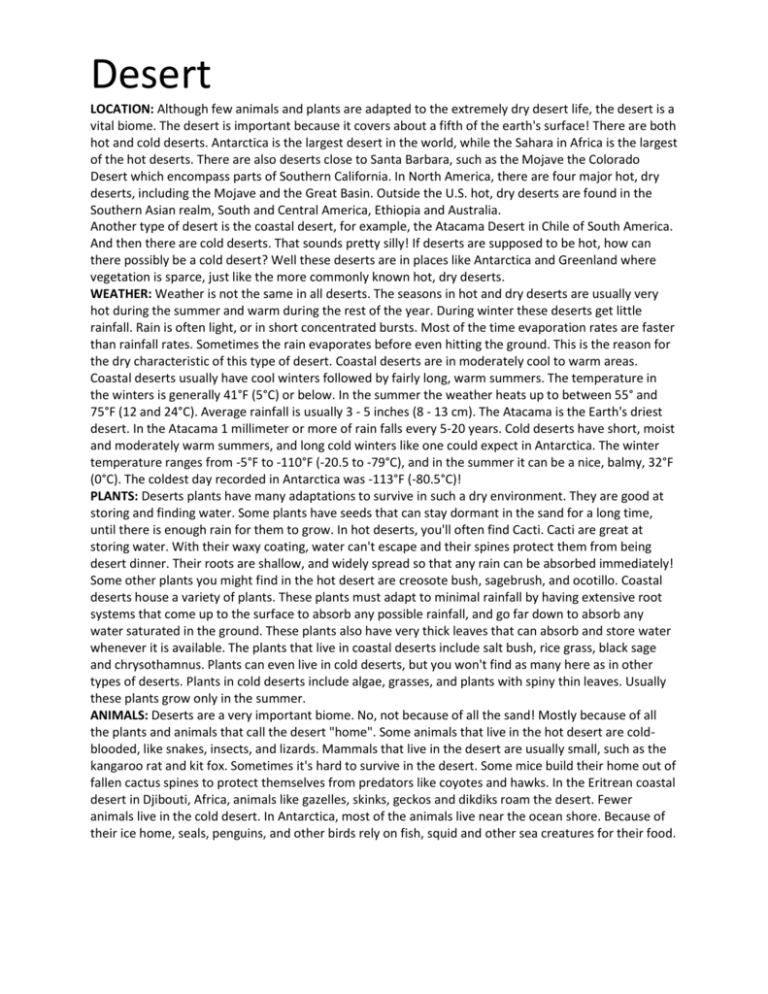
Desert LOCATION: Although few animals and plants are adapted to the extremely dry desert life, the desert is a vital biome. The desert is important because it covers about a fifth of the earth's surface! There are both hot and cold deserts. Antarctica is the largest desert in the world, while the Sahara in Africa is the largest of the hot deserts. There are also deserts close to Santa Barbara, such as the Mojave the Colorado Desert which encompass parts of Southern California. In North America, there are four major hot, dry deserts, including the Mojave and the Great Basin. Outside the U.S. hot, dry deserts are found in the Southern Asian realm, South and Central America, Ethiopia and Australia. Another type of desert is the coastal desert, for example, the Atacama Desert in Chile of South America. And then there are cold deserts. That sounds pretty silly! If deserts are supposed to be hot, how can there possibly be a cold desert? Well these deserts are in places like Antarctica and Greenland where vegetation is sparce, just like the more commonly known hot, dry deserts. WEATHER: Weather is not the same in all deserts. The seasons in hot and dry deserts are usually very hot during the summer and warm during the rest of the year. During winter these deserts get little rainfall. Rain is often light, or in short concentrated bursts. Most of the time evaporation rates are faster than rainfall rates. Sometimes the rain evaporates before even hitting the ground. This is the reason for the dry characteristic of this type of desert. Coastal deserts are in moderately cool to warm areas. Coastal deserts usually have cool winters followed by fairly long, warm summers. The temperature in the winters is generally 41°F (5°C) or below. In the summer the weather heats up to between 55° and 75°F (12 and 24°C). Average rainfall is usually 3 - 5 inches (8 - 13 cm). The Atacama is the Earth's driest desert. In the Atacama 1 millimeter or more of rain falls every 5-20 years. Cold deserts have short, moist and moderately warm summers, and long cold winters like one could expect in Antarctica. The winter temperature ranges from -5°F to -110°F (-20.5 to -79°C), and in the summer it can be a nice, balmy, 32°F (0°C). The coldest day recorded in Antarctica was -113°F (-80.5°C)! PLANTS: Deserts plants have many adaptations to survive in such a dry environment. They are good at storing and finding water. Some plants have seeds that can stay dormant in the sand for a long time, until there is enough rain for them to grow. In hot deserts, you'll often find Cacti. Cacti are great at storing water. With their waxy coating, water can't escape and their spines protect them from being desert dinner. Their roots are shallow, and widely spread so that any rain can be absorbed immediately! Some other plants you might find in the hot desert are creosote bush, sagebrush, and ocotillo. Coastal deserts house a variety of plants. These plants must adapt to minimal rainfall by having extensive root systems that come up to the surface to absorb any possible rainfall, and go far down to absorb any water saturated in the ground. These plants also have very thick leaves that can absorb and store water whenever it is available. The plants that live in coastal deserts include salt bush, rice grass, black sage and chrysothamnus. Plants can even live in cold deserts, but you won't find as many here as in other types of deserts. Plants in cold deserts include algae, grasses, and plants with spiny thin leaves. Usually these plants grow only in the summer. ANIMALS: Deserts are a very important biome. No, not because of all the sand! Mostly because of all the plants and animals that call the desert "home". Some animals that live in the hot desert are coldblooded, like snakes, insects, and lizards. Mammals that live in the desert are usually small, such as the kangaroo rat and kit fox. Sometimes it's hard to survive in the desert. Some mice build their home out of fallen cactus spines to protect themselves from predators like coyotes and hawks. In the Eritrean coastal desert in Djibouti, Africa, animals like gazelles, skinks, geckos and dikdiks roam the desert. Fewer animals live in the cold desert. In Antarctica, most of the animals live near the ocean shore. Because of their ice home, seals, penguins, and other birds rely on fish, squid and other sea creatures for their food.


